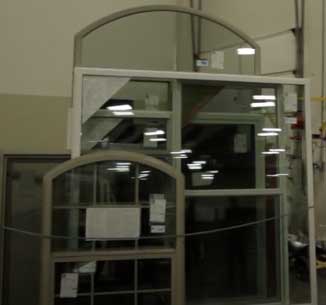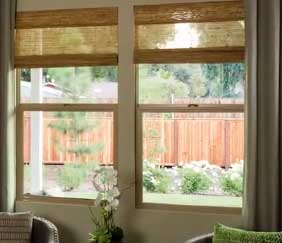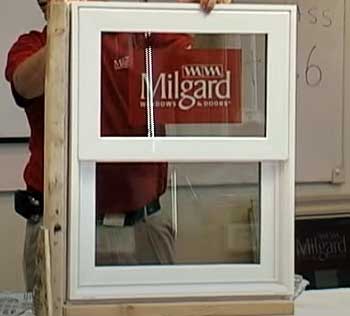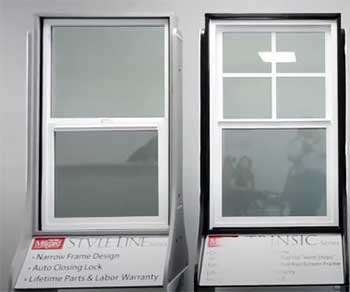When it comes time to replace the windows in your home, you want to make sure you choose the right brand. Two popular options on the market today are Cascade and Milgard windows.
But what exactly sets these two brands apart?
In this comprehensive guide, we’ll compare Cascade and Milgard windows side-by-side, looking at the pros and cons of each. Key factors like durability, energy efficiency, cost, warranties, and more will be examined to help you determine which is the better choice for your home improvement project.
A Brief Comparison Table
| Aspects | Cascade | Milgard |
| Price | More affordable, lower cost | Higher price points |
| Warranty | 10 years on materials | Full lifetime on materials and labor |
| Energy Efficiency | Very good, meet ENERGY STAR | Excellent, exceed ENERGY STAR 6.0 |
| Frames | Vinyl, composite | Vinyl, fiberglass, wood |
| Glass | Low-E, triple glaze options | SunCoat Low-E, triple standard |
| Styles | More classic, custom shapes | Contemporary, modern aesthetic |
| Service Area | Pacific Northwest | Western U.S. |
| Customization | Limited color options | Wide selection of colors |
Overview of Cascade Windows

Cascade Windows is a company based out of Spokane, Washington that has been making windows since the 1950s.
They manufacture a variety of different window styles including single-hung, double-hung, sliding, casement, awning, and more.
Cascade uses quality vinyl, composite, and aluminum materials in their window construction.
Their Ultrex fiberglass material is fade, peel, and flake resistant.
Composite frames with an inner vinyl thermal barrier improve insulation.
Energy efficient glazing options include triple pane, dual Low-E, argon gas filled, and more. Advanced glazing blocks UV rays to protect interiors. Cascade’s Super Spacer warm edge technology also improves thermal performance.
Many Cascade windows meet ENERGY STAR requirements. And their composite and vinyl products are GREENGUARD Gold certified as low VOC emitting.
Overall, Cascade offers a good mix of standard and upgraded window features. Their products back up performance with solid warranties.
Overview of Milgard Windows
Milgard Windows & Doors is a leading national brand founded in 1958 and based out of Tacoma, Washington. They offer vinyl, fiberglass, wood, and aluminum windows and patio doors.

Their top vinyl window series is Tuscany which comes standard with a durable fiberglass construction.
The slim frame design allows for more natural light.
For optimal energy efficiency, Milgard uses SunCoat or SunCoatMAX glazings.
Triple glazing, foam filled frames, and edge spacers further improve insulation.
Many Milgard models meet ENERGY STAR version 6.0 criteria.
Milgard windows feature premium hardware and moving parts. Their Quiet Line motor is whisper-quiet. And SmartTouch locks allow windows to be securely locked with one touch.
All Milgard products are backed by a Full Lifetime Warranty including coverage for materials and labor. This makes them a brand you can really trust.
Weather Resistance and Durability
When comparing the durability of Cascade vs Milgard windows, there are a few key factors to consider.
- Materials
Cascade offers vinyl, composite, and aluminum window options whereas Milgard also includes wood and fiberglass. Composite and fiberglass are highly impact resistant. And all major brands use insulating glass units which have excellent thermal shock resistance.
Milgard’s premium vinly Tuscany series features the most durable vinyl frames reinforced with fiberglass. Cascade’s Ultrex fiberglass is also fade and flake resistant.
Overall, both brands utilize durable materials designed to withstand weather elements.
- Frame Strength
Robust frame construction is important for stability and durability. Both Cascade and Milgard window frames are fusion welded for air-tight strength. The metal reinforcement also improves structural integrity.
Milgard vinyl frames have the edge here with their fiberglass reinforcement making them highly resistant to sagging or warping.
- Weatherstripping
Weatherstripping prevents air and water infiltration. Cascade utilizes Santoprene weatherstripping which is durable and flexible. Milgard also uses flexible PVC or thermoplastic vulcanizate (TPE) weatherstripping.
Both brands provide solid weather seals.
- Moisture Resistance
Excess moisture can damage window components.Vinyl, fiberglass, and composite materials from both brands resist swelling and deterioration from moisture.
And the multi-chambered frame designs allow for drainage and ventilation. CAscade and Milgard window frames are designed to prevent trapping moisture.
Overall, Cascade and Milgard are quite comparable when it comes to sturdy design, weatherproofing, and water resistance. Both makes offer windows built to handle all types of weather conditions and climates.
Glass Options
The types of glass used in the window unit have a big impact on performance. Here’s how Cascade and Milgard compare:

- Glazing
Glazing refers to the panes of glass within the insulated glass unit.
Most standard windows have double pane construction.
But triple glazing adds another layer foroptimal insulation.
Cascade windows are available with triple glazing.
Milgard also offers triple glazed options on select designs.
This really cuts down on heat loss through the glass.
- Low-E Coatings
Low-emissivity or Low-E coatings help reduce heat flow in and out. There are two types:
- Low-E – blocks heat loss in winter
- Low-E2 – blocks heat gain in summer
Cascade Low-E is standard on their dual pane windows. And they offer optional Low-E2 and Low-E3 for enhanced efficiency.
Milgard also has SunCoat or SunCoatMAX Low-E as standard on their dual panes. Low-E can be added to the inner pane of triples.
So both brands recognize the importance of Low-E technology.
- Gas Fills
The space between panes can be filled with argon or krypton gas. This further prevents heat conduction.
Cascade ias argon gas fill available. Milgard injects argon gas into most units as well. This boosts insulation while keeping costs down compared to pricier krypton.
- Spacers
The spacer separates the panes of glass. Advanced spacers like Cascade’s Super Spacer and Milgard’s Edge Spacer improve insulation at the edges.
- UV Protection
Solar radiation can fade furniture and floors. Cascade offers laminated glass options that block 99% of UV rays. Milgard also has coatings to filter UV. This prevents fading and damage.
Both brands provide impressive glass technologies. Triple glazing, Low-E coatings, argon fill, and UV protection are available from Cascade and Milgard.
Energy Efficiency Comparison
A driving factor for new windows is increased energy savings. Let’s see how Cascade and Milgard compare:
- ENERGY STAR Ratings
Many Cascade and Milgard models meet ENERGY STAR qualifications for the Northern, North-Central, South-Central, and Southern climate zones. This means they exceed minimum standards for U-Factor and Solar Heat Gain Coefficient (SHGC).
Cascade windows that are ENERGY STAR certified include:
- 1500 Series single-hung
- 2500 Series single-hung
- 3500 Series single-hung
- 9000 Series vinyl sliding patio door
Milgard series that meet ENERGY STAR include:
- Tuscany® Series vinyl windows and patio doors
- UltraTM Series fiberglass windows and patio doors
- EssenceTM Series wood windows and patio doors
- TrinsicTM Series vinyl windows
- Quiet LineTM Series vinyl windows
So both brands have ENERGY STAR options. Milgard has more series that qualify across more product lines.
- Insulation
U-factor measures how well a window prevents heat from escaping. The lower the U-factor the better.
Cascade windows can have U-factors as low as 0.22 with triple glazing. Milgard also gets down to 0.22 with triple pane.
Both also utilize multi-chambered vinyl frames. The air pockets provide thermal insulation similar to a thermos.
Overall the two brands are comparable when it comes to insulating values and meeting ENERGY STAR standards. Both excel at keeping homes comfortable in all weather.
Cost Comparison
Milgard windows do come at a higher initial purchase price than Cascade. But Milgard products often have upgraded features included in base models.
Cascade has more budget-friendly options for homeowners looking for an energy efficient window without all the bells and whistles.
When it comes to installation, costs can vary based on the contractor. As a national brand, Milgard installation may be pricier. But overall, installation costs are comparable between the two brands.
Milgard offers a Full Lifetime Warranty which guarantees coverage on materials and labor. This provides peace of mind despite the higher upfront investment.
Cascade has solid yet more limited warranties. So weigh the benefits of the warranty coverage based on your budget.
Overall for shoppers looking for maximum value, Cascade delivers quality windows at lower prices. For those who prioritize premium features and lifetime coverage, Milgard is worth the higher prices.
Service Area and Availability
Cascade Windows has dealers located throughout Washington, Oregon, Idaho, Montana, and Alaska. Select styles are available nationally through Lowe’s.
Milgard Windows & Doors has a dealer network covering the full western U.S. including Washington, Oregon, California, Nevada, Utah, Idaho, Colorado, Arizona, and New Mexico. Nationwide availability is through the Home Depot.
So both have wide service areas and retailer availability in the western half of the country. Cascade edges out Milgard when it comes to certain northern states. And Milgard has more coverage across the southwest.
Warranties
The warranty coverage provides an indication of product confidence and durability. Here’s how Cascade and Milgard compare:
Cascade Windows Warranties
- 20 years – Seal failure resulting in visible obstruction through the panes
- 10 years – All component parts including labor
- 5 years – Certain hardware components
- 1 year – Screen and moving parts
Cascade offers solid yet limited windows warranties. All components are covered for 10 years which is the essential coverage window.
Milgard Windows Warranties

- Lifetime – Vinyl and fiberglass frame and component materials
- Lifetime – Glass breakage and seal failure
- 10 years – Certain hardware pieces
- 5 years – Laminated glass and skylights
- 1 year – Moving parts and screens
Milgard provides an industry leading Full Lifetime Warranty.
This covers frame materials, glass breakage, seal failure, and defects.
Labor is also included for lifetime.
The lifetime coverage really sets Milgard apart. This peace of mind helps justify the higher initial investment.
Aesthetics
Along with performance, you want windows that enhance your home’s appearance. Here are some design factors to compare:
- Frame Design
Cascade offers classic frame styles with brickmould, flange, and block options. The beveled exterior profile adds dimension.
Milgard’s contemporary frame profiles feature more slim lines. The PureViewTM design creates a clean, sleek look.
For a traditional home, Cascade provides classic beauty. Milgard’s modern minimal frames suit contemporary homes.
- Color Choices
Cascade vinyl windows come in solid vinyl white or tan. Custom color matching is available.
Milgard allows you to customize the interior and exterior vinyl frame colors. They offer up to 9 standard colors.
So for easy color coordination, Milgard provides more versatility.
- Style Options
All standard operating styles are available from both brands – single-hung, double-hung, sliding, casement, awning, picture windows, etc.
Cascade provides more specialty options like garden windows, arch tops, transoms, and custom shapes.
If trending window styles are desired, Milgard has more selection like radius and geometric designs.
Overall both brands allow design flexibility. Cascade excels at classic windows while Milgard leads with trendy styles.
- Glass Designs
Cascade offers internal grids placed between glass panes. Flat grids help replicate divided lite look.
Milgard also provides Flat grids in horizontal, vertical, and diagonal designs. Their Quiet Line series features a sculpted grid profile.
So both Cascade and Milgard window grids allow you to match home architecture.
When it comes to aesthetics, there are benefits to both brands. For classic charm, Cascade delivers. Milgard’s contemporary windows create modern elegance.
Environmentally-Friendly Factors
Eco-conscious homeowners will appreciate these green attributes:
Materials
- Cascade uses recycled material in their vinyl
- Milgard also incorporates recycled vinyl content
- Both utilize fiberglass which is earth-friendly
Energy Efficiency
- Improved insulation saves energy
- ENERGY STAR models prevent waste
Manufacturing
- Both factories apply green practices
- Cascade uses 97% waste-free manufacturing
- Milgard meets LEED standards
Certifications
- Cascade composite windows are GREENGUARD Gold certified
- Milgard meets criteria for LEED green building standard
So both brands utilize responsible sourcing and green production methods. Their energy efficient windows also conserve resources long-term.
Pros and Cons of Cascade Windows
| Pros | Cons |
| Very good durability and weather resistance | More limited lifetime warranty terms |
| Energy efficient with triple glazing available | Installation may vary based on contractor |
| Cost effective pricing | Color options not as flexible |
| Traditional aesthetics and custom shapes | Not as many contemporary style choices |
| Recycled materials and green production | Service limited mostly to Northwest |
Pros and Cons of Milgard Windows
| Pros | Cons |
| Excellent durability with fiberglass reinforcement | Higher upfront window costs |
| Meets ENERGY STAR 6.0 strict standards | Can have longer lead times |
| Full Lifetime Warranty on materials and labor | More modern look not suited for all homes |
| Wide range of style and color options | Limited mostly to western states |
| Large sustainable manufacturing footprint |
Frequently Asked Questions (FAQ)
Cascade Windows are very good quality overall. They use weather resistant Ultrex fiberglass and durable vinyl. Advanced glazing technology and fusion welded frames add resilience. Cascade windows back up performance with solid 20 year warranties.
Cascade Windows provide a quality alternative to Milgard. Cascade offers better value with lower prices on vinyl and composite windows. Their products are comparably energy efficient and durable, with excellent weatherproofing. Cascade windows are a great option for homes in the Northwest.
Cascade Windows and Doors is the manufacturer of Cascade brand windows. They are a family owned company based out of Spokane, Washington. Cascade has over 60 years of experience producing windows for the Northwest region.
Jeld-Wen acquired Cascade Windows and Doors in 2014. Cascade operates as a subsidiary of Jeld-Wen which is based in Oregon and is one of the largest window and door manufacturers globally. The Cascade brand and operations have remained intact after the acquisition.
The Bottom Line
In summary, Cascade and Milgard both make excellent energy efficient windows built to last. For homeowners on a budget, Cascade is the clear value choice. Their prices are lower than Milgard, but quality remains reliable.
Milgard justify their higher pricing through upgraded features and lifetime warranties. Their modern styling also appeals for contemporary homes.
When choosing between the two, consider your budget, design, location, and warranty priorities. Cascade excels on price while Milgard shines on premium features. With either brand, you can be assured of getting a sturdy, high-performance window.
Carefully weigh the pros and cons as you make your window decision.
